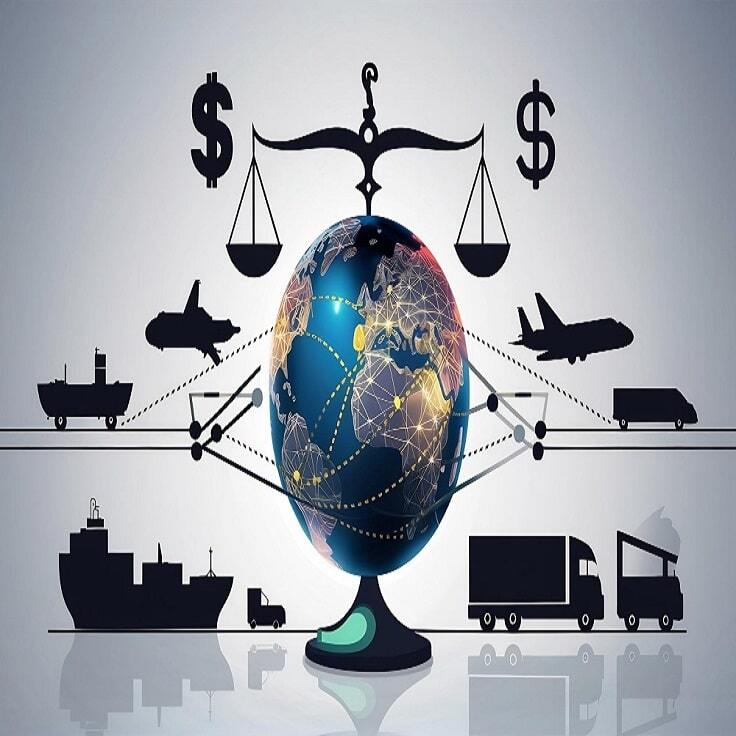Trade Deficits Are Not Always Dangerous: Unpacking The Real Economic Impact
Examining what trade deficits truly mean for India, UAE, and global growth
Trade
deficits often spark economic anxiety, triggering concerns about debt,
dependence, or declining competitiveness. However, in the intricate landscape
of the global economy in 2025, the reality is more nuanced.. Not all trade
deficits are harmful—in fact, many signal growth, investment, or development.
This article analyzes the real implications of trade deficits, especially for
emerging markets like India and trade hubs like the UAE.
Understanding Trade
Deficits in Modern Economics
A trade deficit happens when a country’s imports exceed its exports, meaning it
buys more from the world than it sells.. At first glance, this might appear
negative—more money leaving than entering. However, this metric doesn’t account
for why the deficit exists, how it’s financed, or what it enables. In an
increasingly interconnected global market, running a trade deficit can also
reflect strong consumer demand, rising incomes, or capital inflows for future growth.
In India,
for instance, the merchandise trade deficit widened to $21.1 billion in June
2025, underscoring persistent pressure from strong import demand.On the
surface, that may appear concerning.But a deeper dive reveals a surge in
imports of capital goods, critical technology, and energy—inputs vital for
infrastructure and industry development. Simultaneously, service exports,
particularly IT and consulting, are booming—offsetting deficits and
strengthening the broader economic picture.
Global Context: Why
the Deficit Debate Persists
Many countries—especially those with strong currencies like the United
States—have consistently run trade deficits while maintaining economic
dominance. That’s because trade balances represent just one part of a country’s
broader external accounts, which also include services, remittances, and
capital flows. When deficits are financed through foreign investment, portfolio
inflows, or remittances, they can fuel domestic expansion instead of depleting
wealth.
On the flip
side, persistent deficits due to consumption-heavy imports without
corresponding investment or innovation can weaken domestic industries. This is
why context is key. The cause, composition, and consequences of the deficit
matter far more than the number itself.
India’s Trade
Landscape in 2025
India’s trade strategy in 2025 is increasingly focused on balancing dependency
with development. Energy imports remain elevated, fueled by the country's
sustained demand for oil and natural gas. However, India has significantly
increased its exports in key sectors such as pharmaceuticals, electronics, and
software services. Government initiatives like “Make in India” and trade
agreements with the UAE, Australia, and Africa are enhancing competitiveness.
Furthermore,
the India-UAE Comprehensive Economic Partnership Agreement (CEPA), signed in
2022 and now coming into full effect, has lowered tariffs, improved logistics,
and accelerated the growth of bilateral trade.While the trade balance may still
show a deficit, the value creation on both sides is undeniable.
UAE’s Position as a
Trade Hub
For the UAE, trade deficits are rarely a concern due to its position as a
re-export and logistics hub. With ports like Jebel Ali and its central role in
connecting Asia, Europe, and Africa, the UAE often imports goods only to
re-export them later—creating a trade cycle that benefits the local economy.
The UAE’s
investments in free zones, digital trade corridors, and blockchain-based
customs systems are also improving efficiency. As a result, the UAE manages its
trade flows more like a business operation than a zero-sum account.
The Role of
Services and Capital Flows
Modern trade metrics go beyond goods. In 2025, service exports—such as IT,
tourism, education, and financial consulting—are critical. India’s service
surplus helps cushion the goods trade deficit, while the UAE’s tourism and
financial services sectors generate high foreign exchange inflows.
At the same
time, countries running deficits often attract capital for infrastructure,
startups, or tech ecosystems. This inward investment supports long-term
economic health, even if the short-term trade balance looks negative.
Investor and
Entrepreneurial Insights
For businesses and investors, understanding trade deficits can reveal
underlying economic trends and help uncover potential opportunities.A country
importing advanced tech may become a future innovation leader. High consumer
imports might indicate rising middle-class demand. Entrepreneurs, especially in
India and the UAE, can use this data to align with growth sectors like
logistics, manufacturing, renewable energy, or cross-border e-commerce.
Conclusion
The reality about trade deficits is that they aren't inherently positive or
negative—they serve as an indicator, not a judgment.In 2025, countries like
India and the UAE are proving that strategic trade deficits can support
transformation, attract capital, and build the future. Rather than fearing the
number, smart policymakers and entrepreneurs analyze its structure—and seize
the opportunities it reveals.


